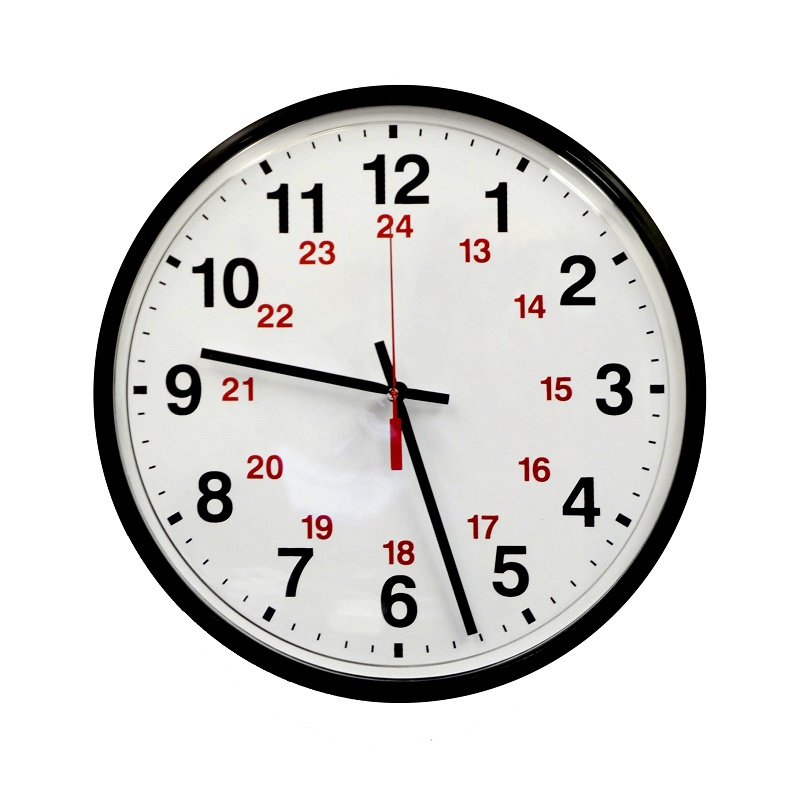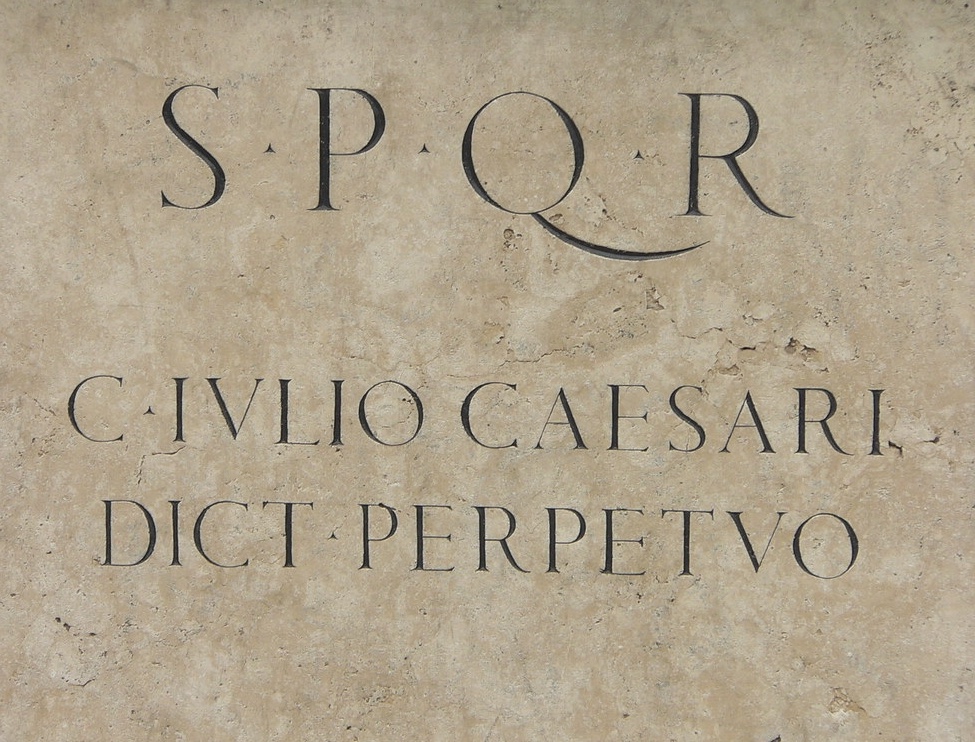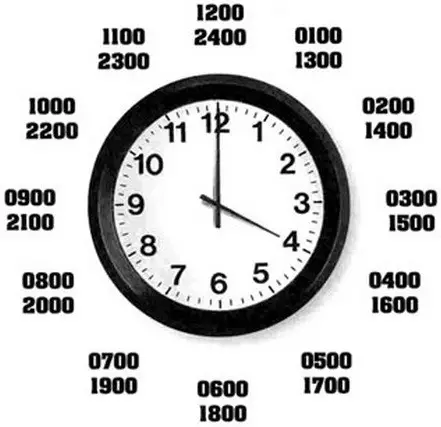11.3. Datetime Standards¶
Date and time formats varies from country to country [19]
11.3.1. Date¶
Formal date format in USA [26]
4/12/61 # short
April 12, 1961 # long
Formal date format in Japan [25]:
61/04/12 # short
1961年04月12日 # long
20/12/31 # short
平成20年12月31日 # long
Formal date format in Germany:
12.04.1961 # only
Date format in Poland:
12 kwietnia 1961
12 kwiecień 1961
12 IV 1961
12.IV.1961
12.4.1961
12.04.1961
12/4/1961
12/04/1961
12-04-1961
1961-04-12
Which format is a formal standard in Poland? There is no formal standard for date format in Poland. There is only a recommendation to write dates using ISO-8601 format (yyyy-mm-dd) [24]. However hardly anyone including government in official documents and forms is using it.
11.3.2. 24 Hour Clock¶
07:00 # morning
19:00 # evening

11.3.3. 12 Hour Clock¶
What AM stands for?
What PM stands for?
7:00 AM # morning
7:00 PM # evening

11.3.4. Noon and Midnight¶
Confusion at noon and midnight [20]
Which time is a midnight?
Which time is a noon?
24 hour clock:
00:00
12:00
12 hour clock:
12:00 am
12:00 pm
11.3.5. Exactly Midnight¶
00:00:00.000000- day start, exactly midnight23:59:59.999999- day end, excluding last microsecond24:00:00.000000- day end, including last microsecond
Day end, excluding last microsecond:
start = 2000-01-01 00:00:00.000000
end = 2000-12-31 23:59:59.999999
Day end, including last microsecond:
start = 2000-01-01 00:00:00.000000
end = 2000-12-31 24:00:00.000000
11.3.6. After Midnight¶
Times after Midnight [21]
23:00 - 25:30 # 23:00-01:30 --> 2h 30m
14:00 - 26:00 # 14:00-02:00 --> 12h 0m
11.3.7. Leap Second¶
UTC leap second [18]
Leap second discontinuation post 2035 [1]
Issues created by insertion (or removal) of leap seconds
Calculation of time differences and sequence of events
Missing leap seconds announcement
Implementation differences
Textual representation of the leap second
Binary representation of the leap second
Other reported software problems associated with the leap second
June 30th or December 31st
Introduced in 1972
Last leap second in 2016
23:59:59 -> 00:00:00 # Normal second
23:59:59 -> 23:59:60 -> 00:00:00 # Leap Second
11.3.8. Zero Padded¶
Zero padded minutes, seconds and microseconds but not hours
Variable length microseconds
Hours:
06:07 # ok
6:07 # ok
Minutes:
06:07 # ok
06:7 # error
Seconds:
06:07:00 # ok
06:07:0 # error
06:07: # error
06:07 # ok
Microseconds:
06:07:00.000000 # ok
06:07:00.00000 # ok
06:07:00.0000 # ok
06:07:00.000 # ok
06:07:00.00 # ok
06:07:00.0 # ok
06:07:00 # ok
Microseconds:
06:07:00.100000 # same time
06:07:00.10000 # same time
06:07:00.1000 # same time
06:07:00.100 # same time
06:07:00.10 # same time
06:07:00.1 # same time
06:07:00.000001 # different time
06:07:00.00001 # different time
06:07:00.0001 # different time
06:07:00.001 # different time
06:07:00.01 # different time
06:07:00.1 # different time
06:07:00 # different time
11.3.9. Roman Numerals¶
In latin
Vis read asUIn latin
Iis read asJIn latin
IVis read asJUJUstands for Jupyter - roman godLouis XIV did not like
IVand changed toIIII[27]There is a symetry in groups of four
I, II, III, IIII,V, VI, VII, VIII,IX, X, XI, XII

IV
IIII
There is a symetry in groups of four:
I, II, III, IIII # Group with I and I
V, VI, VII, VIII # Group with V and I
IX, X, XI, XII # Group with X and I
In latin V is read as U, I is read as J, therefore
IV is read as JU which stands for Jupyter - roman god.

11.3.10. Military Time¶

11.3.11. Decimal Time¶
11.3.12. Other¶
Swatch Internet Time - Beats @300 [7]
sidereal day on Earth is approximately 86164.0905 seconds (23 h 56 min 4.0905 s or 23.9344696 h)
11.3.13. Calendars¶
Julian Calendar [8]
Gregorian Calendar [3]
Introduced by Pope Gregory XIII in October 1582
Saudi Arabia was the last country to adopt Gregorian calendar in 2016
There are only four countries which have not adopted the Gregorian calendar: Ethiopia (Ethiopian calendar), Nepal (Vikram Samvat and Nepal Sambat), Iran and Afghanistan (Solar Hijri calendar)
List of adoption dates of the Gregorian calendar by country [2]
Year |
Country/-ies/Areas |
|---|---|
1582 |
Spain, Portugal, France, Polish-Lithuanian Commonwealth, Italy, Catholic Low Countries, Luxembourg, and colonies thereof |
1584 |
Kingdom of Bohemia, some Catholic Swiss cantons |
1610 |
Prussia |
1648 |
Alsace |
1682 |
Strasbourg |
1700 |
Protestant Low Countries, Norway, Denmark, some Protestant Swiss cantons |
1752 |
Great Britain, Ireland, and the 'First' British Empire (1707–1783) |
1753 |
Sweden and Finland |
1873 |
Japan |
1875 |
Egypt |
1896 |
Korea |
1912 |
China, Albania |
1915 |
Latvia, Lithuania |
1916 |
Bulgaria |
1917 |
Ottoman Empire |
1918 |
Ukraine, Russia, Estonia |
1919 |
Romania, Yugoslavia |
1923 |
Greece |
1926 |
Turkey (common era years; Gregorian dates in use since 1917 Ottoman adoption) |
2016 |
Saudi Arabia |